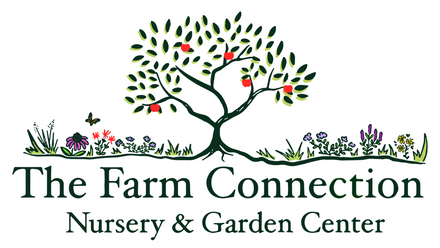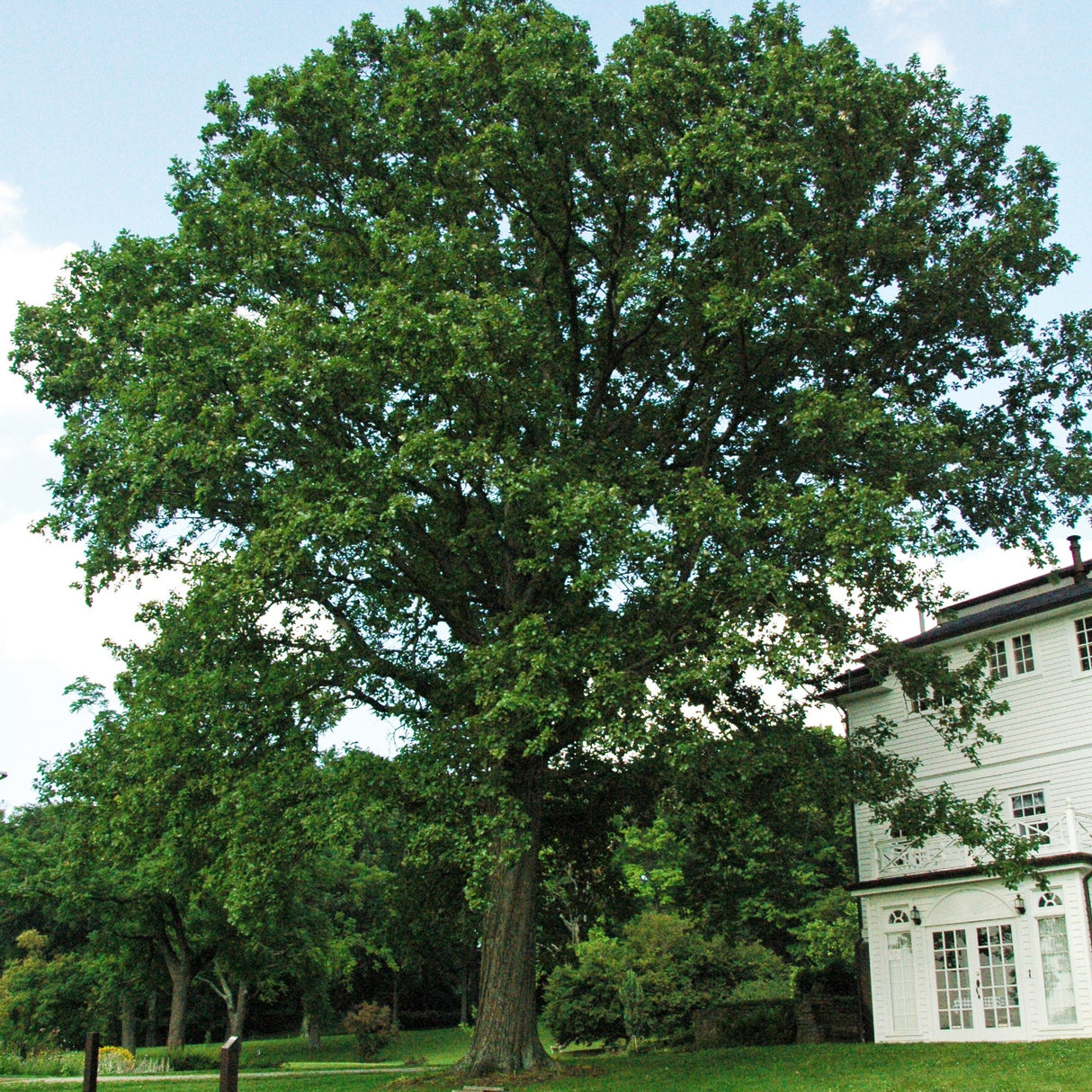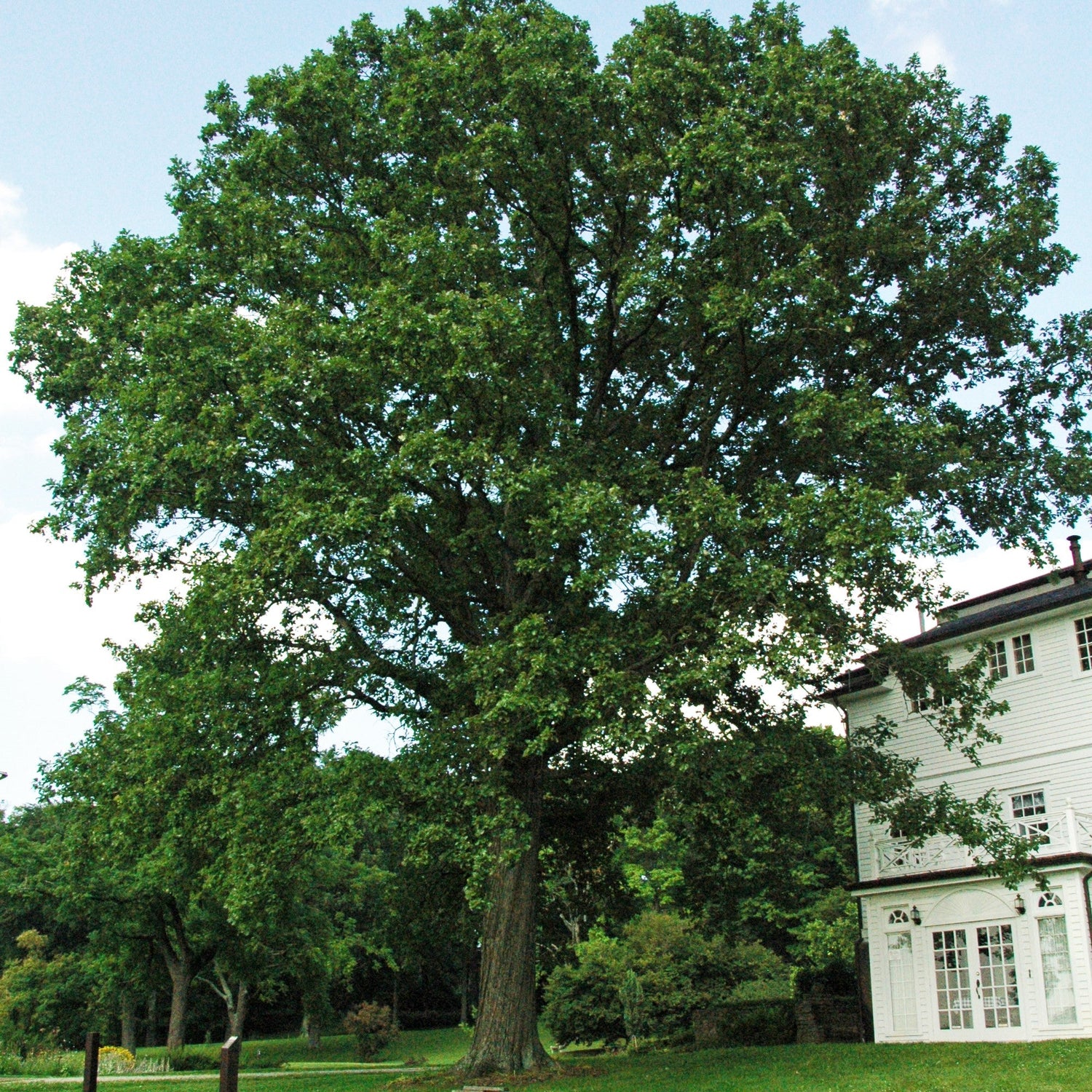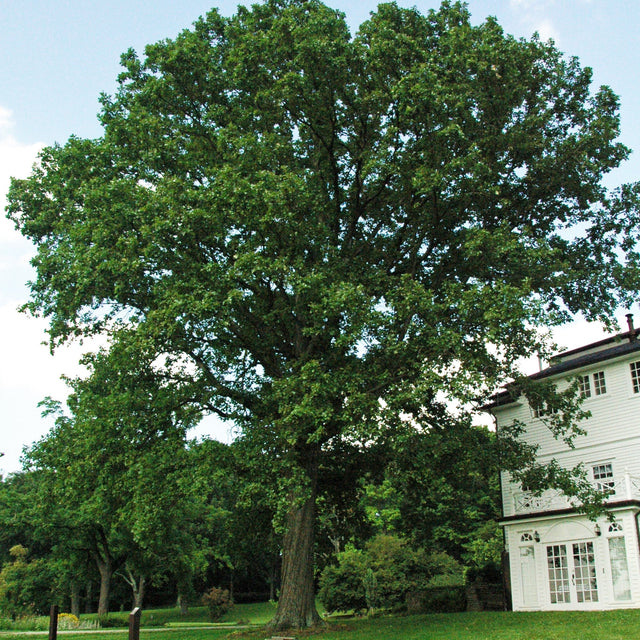Oak, White, Bare Root
Top Keystone Tree for Wildlife & Food Forests
Oak, White, Bare Root - Bare Root / 6-18" Seedling is backordered and will ship as soon as it is back in stock.
Couldn't load pickup availability
Delivery and Shipping
Delivery and Shipping
Make sure to thoroughly review our entire "Shipping, Returns, Refunds, and Our Guarantee" page for all relevant details about ordering from our store.
Making a purchase from our store constitutes an agreement to all the conditions outlined in those policies.
We appreciate your support and look forward to being your favorite plant provider!
Subscribe to our newsletter
Sign up for exclusive offers.
White Oak (Quercus alba)
White Oak is a majestic, long-lived native tree considered one of the most ecologically important and culturally significant hardwoods in North America. Native to eastern and central U.S. forests, this keystone species supports an astonishing range of wildlife, from birds and pollinators to mammals and beneficial insects. With its strong, spreading canopy, sweet acorns, and striking gray bark, White Oak is an essential addition to reforestation projects, food forests, silvopasture systems, and regenerative landscapes designed for long-term resilience.
Key Characteristics
-
Unmatched wildlife value as a keystone species
White Oak supports more Lepidoptera species (over 500!) than any other native tree, including the Polyphemus Moth (Antheraea polyphemus) and Red-spotted Purple butterfly (Limenitis arthemis). Its acorns are rich, low in tannins, and a favored food source for deer, turkeys, jays, squirrels, and bears. -
Sweet, edible acorns for human and animal use
White Oak acorns are less bitter than those of red oaks and were traditionally leached and ground into flour by Indigenous communities. Their sweet flavor and lower tannin levels also make them more palatable to wildlife. -
Powerful canopy species for food forests and silvopasture
This oak develops a broad, rounded crown that provides cooling shade, wind protection, and microclimate buffering in silvopasture and food forest systems. Its deep roots reduce competition with shallow-rooted understory crops. -
Long-lived legacy tree for reforestation
Capable of living for 300–600 years, White Oak is a foundation species in Eastern hardwood forests. It improves soil over time with leaf litter and deep root carbon deposits while anchoring habitat for centuries. -
Tolerant of a wide range of soils
Though it prefers deep, well-drained loamy soils, White Oak is remarkably adaptable to a variety of conditions including clay and dry uplands. Once established, it is drought-tolerant and low-maintenance.
Product Details
- Native range: Eastern and Central U.S.
- Plant life cycle: Deciduous Tree
- Sun requirements: Full sun
- Soil requirements: Medium-dry to medium; prefers deep, well-drained loams
- Mature height: 60–100 feet
- Bloom time: Spring
- Bloom color: Inconspicuous yellow-green catkins
- USDA Hardiness zones: 3–9
White Oak is the cornerstone of many native ecosystems and an exceptional choice for those looking to build long-term, high-value biodiversity in their landscapes. A true legacy tree that rewards for generations.
-
Sun RequirementsFull Sun, Part Sun/Shade
-
Soil RequirementsMedium, Medium-Wet, Medium-Dry
-
Bloom ColorYellow, Green
-
Bloom TimeApril, May
-
USDA Hardiness ZonesZone 3, Zone 4, Zone 5, Zone 6, Zone 7, Zone 8, Zone 9+
-
Native StatesMaine, Vermont, New Hampshire, New York, Pennsylvania, Ohio, Indiana, Illinois, Michigan, Wisconsin, Missouri, Kentucky, Tennessee, Virginia, North Carolina, South Carolina, Georgia, Alabama, Mississippi, Arkansas, Louisiana, Oklahoma, Texas
Payment & Security
Payment methods
Your payment information is processed securely. We do not store credit card details nor have access to your credit card information.




